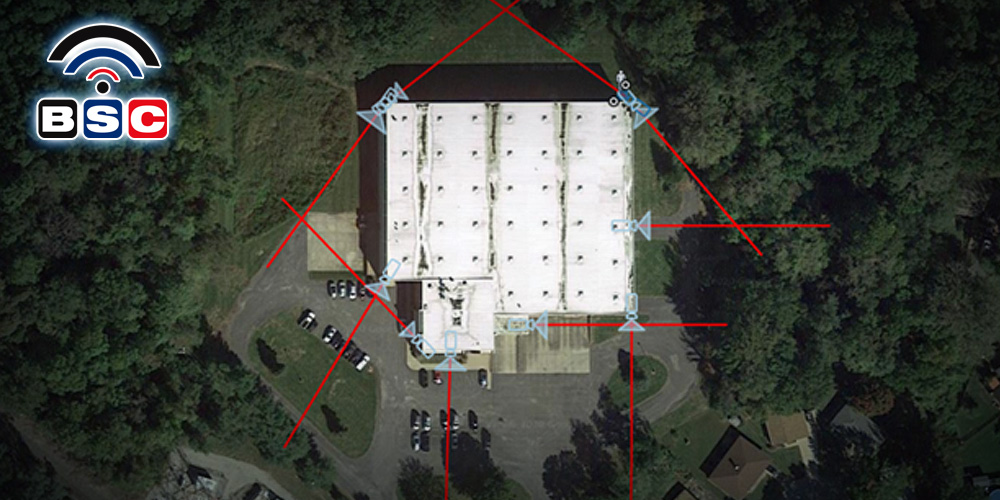Video Surveillance Is a Hot Commodity for Business and Industry
The history of our country has been forever changed based on video surveillance and the prevalence of digital cameras. We have body cams, dash cams, property surveillance, ATM cameras, and more. This means that someone is always watching when it comes to theft, employee safety and accountability. How do humans behave when they know no one is watching? YouTube is wrought with videos of people who didn’t know the cameras were rolling. It’s even become a form of entertainment.
Growth in The Video Surveillance Market
The global video surveillance market size is expected to grow from 45.5 billion in 2020 to 74.6 billion by 2025, at a Compound Annual Growth Rate of 10.4%. Increasing concerns about public safety and security, the growing adoption of IP cameras, and rising demand for wireless and clandestine observation cameras are the factors driving the video surveillance industry’s growth. (Reportlinker 2020)
Transitioning into The Future: From Analog to IP Cameras
For years, analog video technology has been the most reliable source of surveillance, especially for retail businesses. But as security needs are changing in every industry and have become more demanding, analog technology is often not the most viable option; its performance is reaching its limits. 2020, we can say, is a defining year for video surveillance. With a stepwise transition to digital CCTV solutions, one can combine the existing analog installations with the benefits of digital systems.
Modern digital and direct IP networked, integrated CCTV components can give maximum freedom when it comes to adapting the system to new and different surveillance requirements. If your business still uses analog cameras and is looking into an upgrade to IP digital technology, while an investment, the long-term savings from prevented thefts, employee accidents, industrial facility safety incidents and more, tells the real story.
The Difference Between Analog and IP Cameras
An analog signal is any continuous signal for which the time-varying feature (variable) of the signal is a representation of some other time-varying quantity, i.e., analogous to another time-varying signal.
For example, in an analog audio signal, the instantaneous voltage of the signal varies continuously with the pressure of the sound waves. It differs from a digital signal, in which the continuous quantity is a representation of a sequence of discrete values which can only take on one of a finite number of values. The term analog signal usually refers to electrical signals. IP security cameras send their signal over a network, allowing greater information transfer than an analog signal sent to a DVR. (Wikipedia 2020)
With time, video surveillance systems have become more intelligent and robust. Features like high-resolution footage, motion detection, facial recognition, and license plate capture, 2-way communication, etc. provide confidence, a sense of security, and drive efficiencies into places and situations we never thought possible.
What are IP Cameras Biggest Advantages?
Resolution
Whether cabled or wireless, CCTV systems that use an IP system have multiple advantages. They can record at a higher resolution providing enhanced picture quality no matter the screen size. Digital granularity means zooming in won’t create a blurry image.
Some of the best analog cameras can capture footage at up to half a megapixel. An IP camera can capture footage up to 3 megapixels which is 6 times the resolution or clarity of an image. The difference isn’t the quality of the camera, it is the amount of information that can be handled via an IP system. With an analog system, you can’t funnel through that much visual information. An IP System for CCTV can.
Analytics
A digital video recorder (DVR) on an analogue system can’t highlight events and save these out. To find a specific moment, you’ll have to revisit hours of recorded video until you find it. It can be daunting, especially when a quick answer is needed. An IP system can find events based on search criteria. These can include motion detection, tampering with the camera, and a range of other events. We’ve all seen those TV shows that are based on “captured on camera” moments. There’s no better way to protect property and assets.
Scalability
An analog system limits the number of cameras that can hook up to a single DVR. You also need cabling for each individual camera requiring complex cable management. IP camera CCTV uses a network video recorder (NVR). This runs each camera in a certain range to a single switch using one ethernet cable back to the recording device, saving substantially on cabling, installation, and maintenance costs.
On top of this, IP cameras cover a better field of view meaning it can cover the area that would have taken multiple analog cameras to observe. An IP system for CCTV can be a bigger initial investment, but it can save money in the long-term. Fewer cameras, less cabling, and less maintenance means fewer equipment failures to triage. Combined with the search capabilities saving substantial amounts of time when looking for particular events in the footage, it makes business sense.

IC Realtime
One of our featured surveillance camera solution providers is IC Realtime. As leaders in surveillance technology, we are excited to promote Ella, a smart search capable product. It uses video search engine technology that will augment surveillance systems using analytics, natural language processing, and machine vision.
Ella uses both algorithmic and deep learning tools to give any surveillance or security camera the ability to recognize objects, colors, people, vehicles, animals, and more. It works with both existing and professionally installed surveillance and security cameras and is comprised of an on-premise video gateway device utilizing a cloud platform subscription.
Works Cited
https://www.securitymagazine.com/articles/88854-pros-and-cons-for-ip-vs-analog-video-surveillance
https://en.wikipedia.org/wiki/Analog_signal
https://cescomplete.com/2017/10/20/advantages-ip-over-analog/


